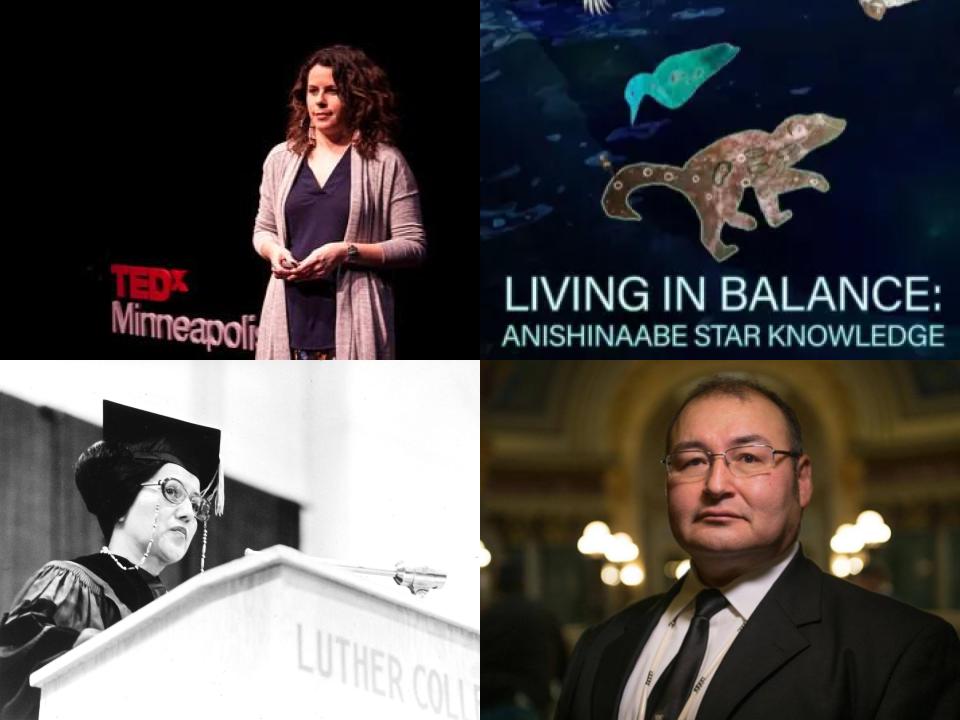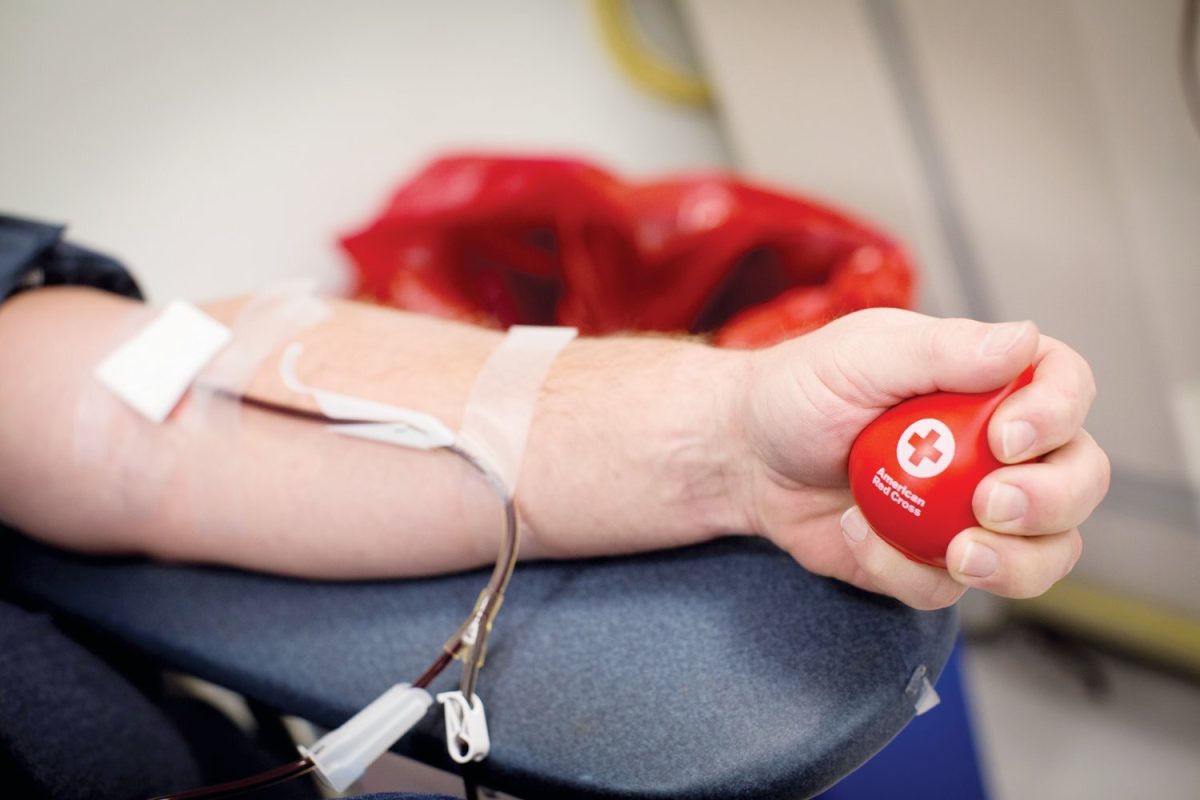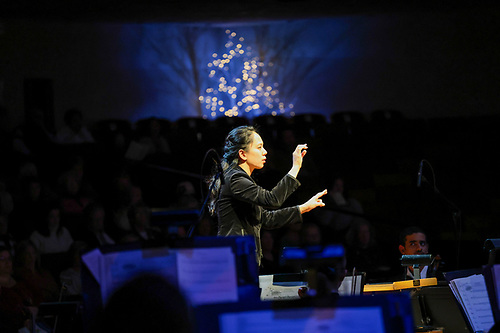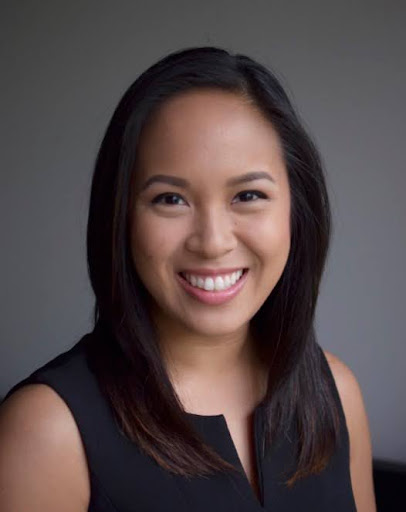“Haŋ mitákuyepi, Kate Beane emakiyapi ye. In Dakota, my name is Ahdipiwiŋ, Brings Them Home Woman, and in English I am known as Dr. Kate Beane.”
A citizen of the Bend in the River people, of Flandreau, South Dakota, Dr. Kate Beane’s family is originally from Mni Sóta Maḳoce (Minnesota), the land where the water reflects the skies. She greeted a lecture group of first-year Paideia students on November 7, as her relatives, mitákuyepi, setting up a discussion of the importance of family, and the role of family in passing down Daḳota culture and tradition. Beane’s visit to campus was one of many events organized by Luther groups to highlight Native American Heritage Month, which occurs annually in the month of November.
Luther College sits on land that was home to the Ioway, Sac, Fox, Dakota, Winnebago, and Ho-Chunk people. Throughout the country, there are 574 federally recognized tribes, most of whom were removed from their indigenous lands by the US government, and were funneled onto tiny reservations far away from their sacred places and patterns of home. The Ho-Chunk were forcibly removed from their land in Wisconsin, brought to northeastern Iowa, and then were forcibly relocated again in less than a generation, as immigrant settlers moved to the area, founding the college. The history of this school is irrevocably intertwined with the dispossession and forced relocation of many indigenous groups, yet this is often a history that goes unspoken in the college classroom.
This year’s Paideia students read “In the Beginning, The Sun: A Dakota Legend”, a book that was written by Charles Eastman, edited by Beane’s father and included an afterward written by Beane herself. They also watched “Ohiyesa”, a film that follows Beane as she uncovers Eastman’s life. Though the story of Charles Eastman (Ohiyesa), has been told many times over, this was the first time that it had been told through a distinctly indigenous perspective. There were many discrepancies between the narratives that had been previously shared, and Beane’s family wanted to tell Ohiyesa’s story in a way that honored him, and could serve future generations.
A goal of the Paideia curriculum is to allow students to expand their worldview through exposure to new voices and perspectives. The modern indigenous perspective often goes untaught in U.S. curriculums, as most classrooms present indigenous people in a pre-1900 context. Beane highlighted the importance of thinking about indigenous communities as people living in the present day, not a figment of the past.
“There’s a group called IllumiNative that does excellent work in educating and building awareness about American Indian people and American Indian issues,” Beane said in her lecture. “They did some surveys, and it was astonishing to find out that about 80% of the US population knew nothing about Native people past the 1800s. When you learn about Native people, you learn about everything in the past. You write about us in the past tense instead of understanding that we’re very much present, we’re very much here.”
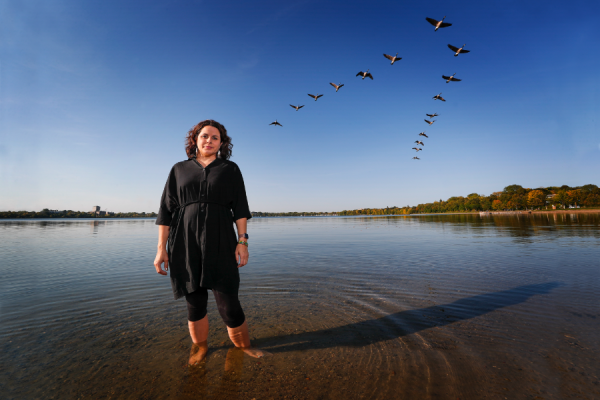
Beane is the executive director of the Minnesota Museum of American Art, an adjunct professor in American Indian Studies at the University of Minnesota, and a board chair of environmental stewardship nonprofit Wakan Tipi Awanyankapi. She, along with her sister Carly Bad Heart Bull, led the movement to restore the name of Lake Bde Maka Ska, a major lake in Minneapolis, Minnesota. She told MPR News in November 2020 that she hopes future generations of Indigenous people in Minnesota will continue to be proud of who they are, speak their language, know their histories and advocate for Indigenous lands.
“We are so much a part of this land,” Beane said, in her interview with MPR News. “We are so ingrained within this earth that we were created out of, and within the spaces that we love, that there’s no question we are going to stay here. We’re resilient people and we’re not going anywhere.”
Luther College has organized events and presentations to focus on Native American History Month in the past. Helen Miner (’49), the first Native American student to attend Luther, has repeatedly been recognized as a member of the Ho-Chunk Nation; in 2013, she was featured as Luther’s “Moment in History #79”, and in 2022 she was acknowledged as one of seven Native American students who attended Luther in the 1940’s and 1950’s as part of research done by Associate Professor of History Anna Peterson. Peterson’s research in 2022 also focused on Luther’s historical relationship with the Bethany Indian Mission School, which subjected Native American students to forced conversion to Lutheranism.
“[Members of the Luther community] participated in the colonial project of dispossessing Native peoples and offering them Christianity as well as a circular education designed to foster white control over them further,” Peterson said to CHIPS in 2022.
This year, in the spirit of facilitating conversation and educating people on campus about the past and present stories of indigenous groups, the Center for Intercultural Engagement and Support (CIES) has planned a variety of events throughout the month of November. On November 15 and 16, a showing of “Living in Balance: Anishinaabe Star Knowledge” and a related planetarium show sponsored by CEPE will happen in the Valders Hall of Science at 5:30 PM. The CIES office is also facilitating a Native American Heritage Month Community Gathering in the Nobel Room on November 28 at 5 PM. This event will be an opportunity for indigenous and non-indigenous students to have conversations with indigenous members of the community. This gathering will be followed by a lecture entitled “Ho-Chunk History & Presence in Iowa: The Neutral Grounds” by Bill Quackenbush, a member of the Ho-Chunk nation. More information about all of these events can be found in the CIES office.
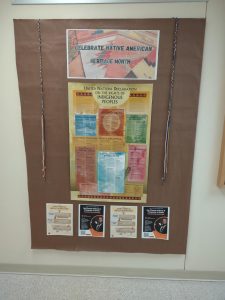
Michelle Boike (‘13), Director of CIES, spoke to the importance of celebrating students from diverse cultural backgrounds, as well as educating those who have not previously had exposure to indigenous cultures.
“It’s important to have the heritage months to show that support from the college, from CIES, for those students that are part of the identity groups for each month, and show that we see them, we value them, we want to make sure that their identities are represented on campus,” Boike said. “[We want] to build that understanding and awareness of those groups and their experiences, and to build the capacity of the campus to understand different peoples and their identities.”
Beane closed her lecture by speaking about her daughters, and the type of world that she wishes to pass onto future generations.
“I realized why we do the work that we do,” Beane said in her lecture. “It’s not about us, it’s about [those who come after us]. It’s about creating a space for them to be able to make their contribution. We live in a busy world, and there’s only so much space, only so much we can do. We’re trying to make a dent, we’re trying to make people understand that as Dakota people, we’re living people. We’re going to continue to be here, even though these early people that wrote about us were documenting what they thought were a dying race of people. We didn’t die out. We’re still here.”

